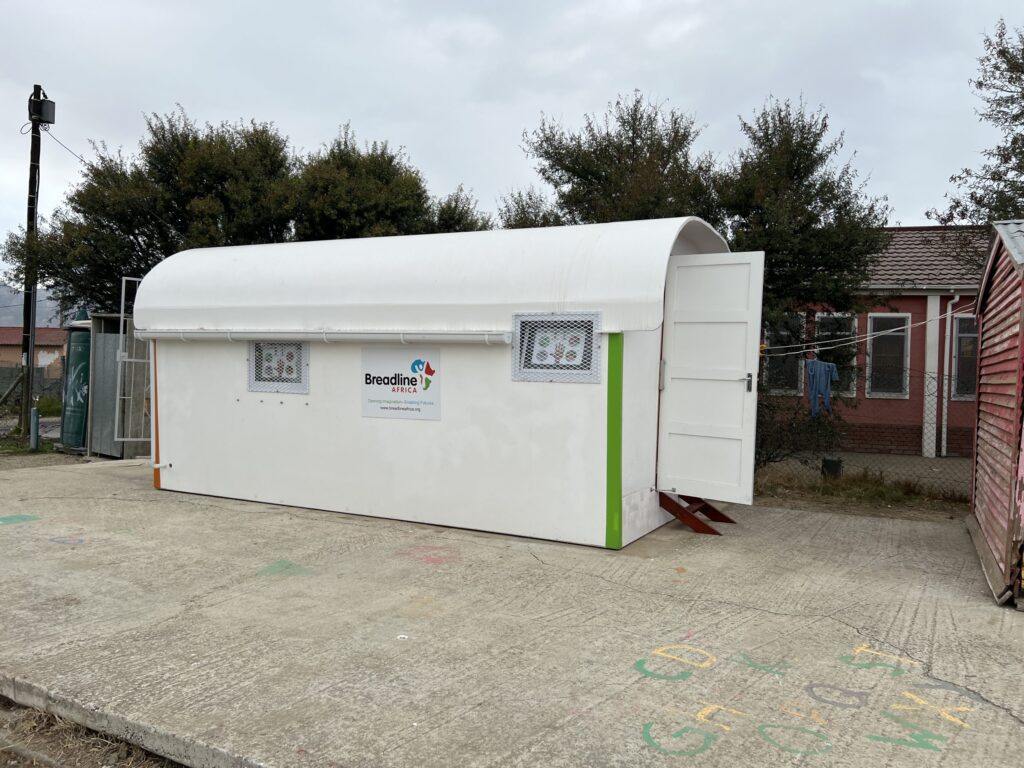In October 2022, Breadline Africa launched its first classroom facility built with BRIC technology. This patented concrete alternative has massive applications for ECD infrastructure provision in Southern Africa. An interesting combination of alien invasive tree material (woodchip), recycled fabric textiles, recycled building rubble, lime and a patented binder is used to make BRIC bricks, blocks, panels, 3D printed furniture, and can be cast in-situ or to create modular/movable structures.
With many applications, this building technology can be used to combat challenging site conditions within the rural and informal settlement context.
The environmental benefits of the material/technology are as follows:
- 95% recycled or waste material per m2.
- Saves 20l of water per m2 per day when compared to traditional brick and mortar.
- >1ha of indigenous ecosystems are restored per 43m2 structure. This has a significant impact on the frequency of veld fires and alleviates the strain that the thirsty alien species have on the Earth’s hydrosphere.
- Can sequester up to 250kgCO2e per m2 in the construction phase. Rigorous due diligence and third-party verification is conducted to ensure that the carbon calculations are accurate and monitored over the necessary scopes and boundaries.
- A major advantage of the technology is the superior fire rating that it provides. The 3-hour fire rating, which is certified for the wall panels used in the BRIC structures has significant potential to prevent township and shack fires from spreading when applied correctly.
- BRIC buildings are highly energy efficient due to their insulating properties. These buildings maintain an ambient temperature of 21°C and require no additional heating or cooling in the South African climate.
We were able to sequester 1,14tCO2e (I.e 1,14 tons of carbon dioxide – or equivalent greenhouse gas – was captured and prevented from being emitted into the atmosphere) during the construction of the Nikithemba Educare – carbon negative, sewer-less toilet facilities in Khayelitsha. We are still waiting for the environmental product declaration (EPD) to be submitted for the Bavumeleni Educare classroom and toilet facilities.
The application of this building technology also generates many social and community benefits:
The Ibhokwe Construction team, who constructed the 18m2 BRIC classroom and toilet facilities for Bavumeleni Educare, are also able to achieve the following:
- 12 SMME operators per project.
- Up to 8 local job training opportunities per operator.
- Support maintenance requirements and manage modular expansions necessary for ECD centers growth.





